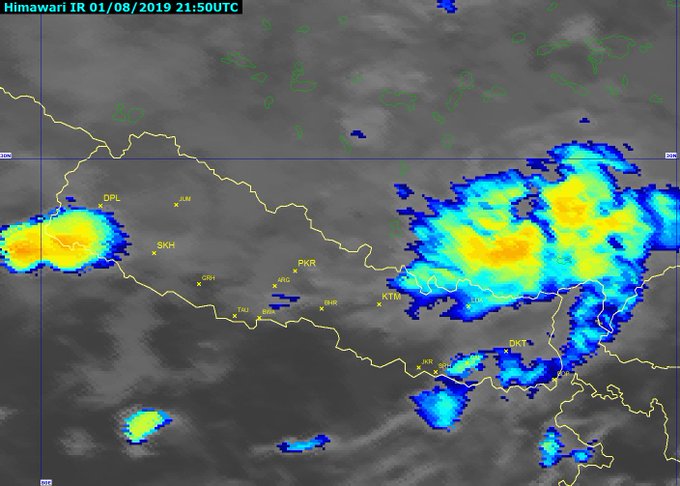Monsoon to gain strength after three days, says MFD
Kathmandu, August 1
Meteorological Forecasting Division today said monsoon was likely to lose momentum for the next two or three days throughout the country.
According to a meteorological analysis released by MFD, the axis of monsoon trough is on the south of the Tarai and is predicted to gradually shift towards and remain in the west of the Tarai after two or three days.
“Monsoon will gain strength only after its axis of monsoon shifts from the south to the west,” it read. MFD however said, weather across the country will remain cloudy, with light rainfall at a few places.
Many parts of the country received little to no rain in the past 24 hours due to reduced monsoon activity. Biratnagar station of MFD recorded the highest rainfall with 19 mm, followed by Pokhara (12 mm), Jumla (9 mm), Birendranagar and Nepalgunj (5 mm, each), Bhairahawa (4 mm), Dipayal and Taplejung (3 mm, each) and Dadeldhura (1 mm), the MFD records showed. Kathmandu experienced traces of rainfall. Okhaldhunga, Dhakuta and Simara stations recorded no rain.
In July, Kathmandu had received 492.3 mm of rainfall against the monthly average of 363.4 mm. Flood Forecasting Section of the Department of Hydrology and Meteorology said water flow in all small and large rivers was predicted to remain below warning level due to virtually dry monsoon, but it advised people living around small streams of hilly areas to maintain alert against possibility of flash floods.
Nepal receives 80 per cent of annual rainfall on average during monsoon, which originates in the Bay of Bengal and moves along the southern flanks of the Himalayas. The average annual rainfall in Nepal is 1,600 mm but, it varies from place to place, depending on climatic conditions, according to MFD.
As per the forecast of the 14th session of South Asian Climate Outlook Forum, held in Kathmandu from April 18 to 23, below-normal rainfall is likely to occur in western parts of provinces 1, 2, 3 and 5, this monsoon. Gandaki, Karnali and Sudurpaschim provinces will receive normal rainfall. SASCOF had developed a consensus outlook through an assessment of experts on the prevailing global climate conditions and forecasts from different climate models around the world. Monsoon usually enters Nepal on June 10 and remains active till September 23, every year. This year, MFD had officially declared the onset of monsoon from June 20, a delay by 10 days.






